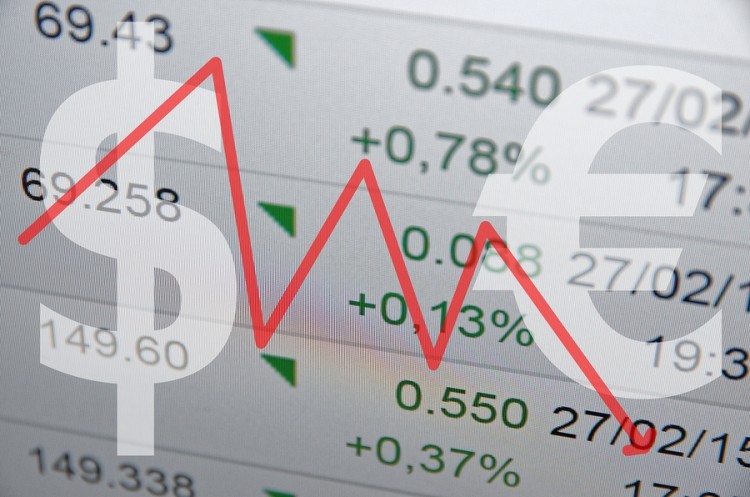Dollar and Euro Weaken on Reports Showing Standstill Inflation

©2015 Bloomberg News
NUSHDQ6KLVRB
(Bloomberg) — Inflation — what a downer.
The dollar and euro weakened against most of their major peers on sluggish data from both the U.S. and euro zone. Prices paid by American households declined 0.1 percent in August, the first decrease since January, while in the European currency bloc they slowed almost to a standstill.
European Central Bank President Mario Draghi said this month that officials are ready to expand their asset-purchase program if needed, even as the Federal Reserve enters a two-day meeting Wednesday to discuss whether to raise interest rates for the first time since 2006.
“Consumer-price indexes were slightly softer, suggesting policy tightening or any meaningful exit from ultra-easy policies is not in sight yet,” Aurelija Augulyte, senior foreign-exchange strategist at Nordea Markets in Copenhagen, said by e-mail. The readings are putting pressure on both the dollar and euro, she said.
The Bloomberg Dollar Spot Index fell 0.4 percent to 1,201.30 at 4 p.m. in New York. The U.S. currency fell 0.2 percent to $1.1290 versus the euro and climbed 0.1 percent to 120.57 yen.
Inflation Slows
Prices paid by American households declined in August as cheaper gasoline helped keep inflation below the objective of Fed policy makers. The so-called core measure, which strips out often-volatile fuel and food costs, rose 0.1 percent for a second month, Labor Department figures showed Wednesday.
That adds to a list of factors Federal Open Market Committee members must weigh against signs of robust growth before they announce their decision Thursday.
“Today is all about positioning ahead of the FOMC” meeting, said Bipan Rai, director of foreign-exchange strategy at Canadian Imperial Bank of Commerce’s CIBC World Markets unit. “We’re going to see tight ranges.”
Price growth in the euro bloc decelerated to 0.1 percent in August compared with a year earlier, the European Union statistics office said Wednesday. That reading is the lowest in four months.
The inflation data “together with the latest statements that they might do something more on the quantitative-easing side is of course a reason to sell the euro,” said Lutz Karpowitz, a senior currency strategist at Commerzbank AG in Frankfurt. “It’s a mix of some not-so-positive European data and expectations of what’s going to happen with the Fed tomorrow.”
Fluctuating odds on whether the Fed will raise rates Thursday have kept JPMorgan Chase & Co.’s global foreign- exchange volatility index above its 9.62 percent one-year average for the past four weeks. It was at 10.96 percent Wednesday.
Futures show a 28 percent chance the Fed will raise interest rates on Thursday. The probability of a move has fallen from 38 percent at the end of August. The calculation is based on the assumption that the effective fed funds rate will average 0.375 percent after the first increase, compared with the current target rate of zero to 0.25 percent.
To contact the reporters on this story: Lananh Nguyen in New York at lnguyen35@bloomberg.net; Lucy Meakin in London at lmeakin1@bloomberg.net To contact the editors responsible for this story: Boris Korby at bkorby1@bloomberg.net Michael Aneiro



No Comment